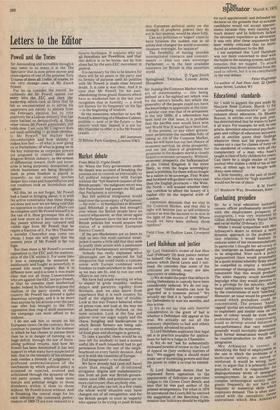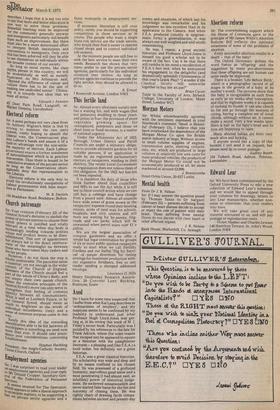Combating prejudice
Sir: As a local education authority careers officer professionally involved with the employment prospects of immigrants; I was very interested IV Gillian Athisayan's article 'Racial facts. andracial myths' (February 21). Whilst 1 would sympathise with Mrs Athisayan's desire to initiate a more dynamic approach to the problem of race relations, I would hesitate to endorse some of her recommendations. In particular I thought her advocacy of the 'immigrant as handicapped' policY to be misguided. Were such a policY implemented there would presumab/Y be a quota system whereby firms would .be compelled to employ a minimunt percentage of immigrants. Imagine the, resentment that this would produce. The white majority would inevitablY begrudge what they would perceive. t° be a privilege for the minority, whilst many immigrants would be aggrieved, by the connotations of such 'labelling • Moreover, an issue would be generated around which prejudices could be concentrated. The present 'handicapped' quotas are notoriously difficult to implement and similar ones on the basis of colour would be even more problematical. Public controversY, would so develop around instances 01 non-performance that race relations generally would inevitably deteriorate. Such formal demarcation would onlYf be counter-productive to the aim ° Integration. Mrs Athisayan is correct i° identifying the field of employment as the one in which the problems of a multi-racial society are solved or reinforced. It would be wrong. ,i ever, to argue that it is primarily raT-.. prejudice which is responsible ro't disproportionate levels of immigrari,„ unemployment. In an increasing'? complex technological society irmt grants frequently do not have t.1'11` linguistic or numerical skills whic„.. employers demand. This is often ass'.. ciated with the unrealistic career aspirations which Mrs AthisaYan
describes. I hope that it is not too trite to say that more and better education is one way to solve these problems. Remedial teaching must be improved for the community generally anyway and immigrants particularly will benefit from such an improvement. But there must also be a more determined effort to interpret British institutions and conventions to immigrants. Only once this has been achieved will they be able to see themselves as individuals within the broader context of our society. So long as racial myths, like class Myths, persist in this country, we will be economically as well as socially frustrated. As Mrs Athisayan said, "Beyond the difference of colour and culture there has to be the aim of making one undivided nation". Ultimately it is towards that ideal that we must all strive.
Edward J. Fennerr 45 Deer Park Road, Langtoft, nr. Market Deeping, Lincolnshire











































 Previous page
Previous page